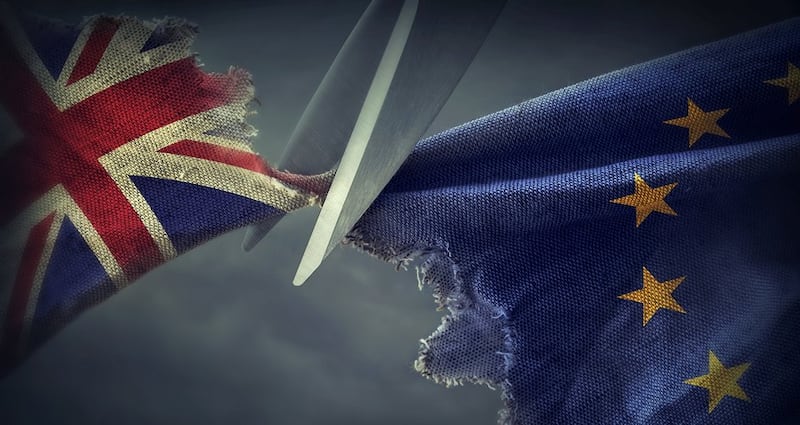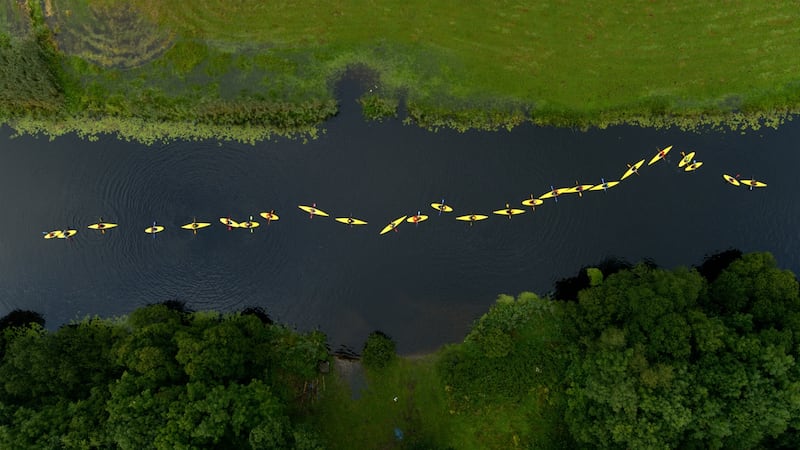A US visual artist who is firmly set against hard borders whether in Ireland or in her native country is bringing her take on the issue to Belfast.
The world premiere of Suzanne Lacy's project on the "profound impact the Irish Border has on the lives of people who live there" entitled Across and In-Between will be showcased at the Ulster Museum from Thursday.
It is in two parts: The Yellow Line, a three-screen film that will be projected on to the front of the museum each evening; and The Border People's Parliament where those involved in the film will be invited to a private celebratory dinner at Stormont and to discuss Border matters.

The film features more than 300 participants including farmers, horse-owners, scouts, hikers and villagers from communities across the Fermanagh, Donegal, Leitrim, Cavan and Monaghan borderline.
Lacy led a crew of 25 artists and helpers in the project which was filmed during August. She says her work provides an "opportunity to explore the Border without entering into Brexit politics" .
Mexican wall
From California close to the Mexican border where US president Donald Trump is intent on having a wall built, she does not like such firm separations.

“The Border is a huge concern. For me personally the idea of a hard border and a wall is an anathema. I don’t want to go into politics here but I think it is ridiculous,” she says.
The people who participated in the film donned yellow jackets, flew yellow kites, paddled in yellow kayaks and had horses tracing a yellow track along the Border to demonstrate the special nature of the 500km boundary.
In one scene, dozens of people, again dressed in yellow, walked to and danced at the bridge between Pettigo in Co Donegal and Tullyhommon in Co Fermanagh.
Gorse concept
So, what is it all about and why the yellow motif? “It represents the yellow gorse than runs through the fields and through the countryside. We are looking at the idea of a border without assigning politics to it. There is no orange, no green, no red, no blue,” she explains.
Ms Lacy also was trying to reflect how border people are somehow different. “They are used to navigating a border whether it is hard or soft. If you have ever driven around there you will know you can go almost imperceptibly from one country to another. You only know where you are by your mobile phone service changing,” she says.
“People carry purses with two kinds of money – sterling and euro. They have different lifestyles. I don’t know if they are a distinct people but they have distinct characteristics,” adds Ms Lacy.








